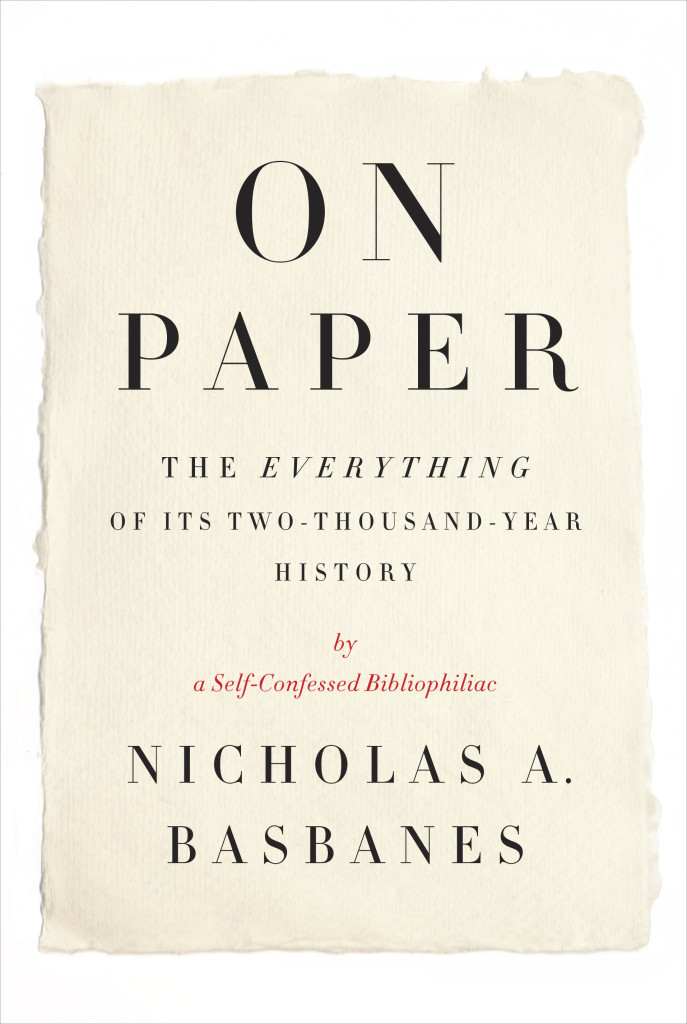
At the TLS, Leah Price reviews On Paper: The Everything of Its Two-Thousand-Year History by Nicholas A. Basbanes:
You may be reading this across a fold of paper, or you may be squinting at an electronic screen. Two centuries ago, the former would have seemed almost as futuristic as the latter. Wood-based paper wasn’t successfully patented until 1845, after inventors had cooked straw, boiled banana peels, crushed walnut shells and dried seaweed. The coinage “pulp fiction” followed once it became clear that the new technology produced pages more brittle than those manufactured from costlier linen rags. By the dawn of the digital age, W. J. T. Mitchell could dismiss books as “tree flakes encased in dead cow”.
Unlike those cows, however, paper remains in robust health. One reason is that it combines apparently irreconcilable properties – durability (it outlasts papyrus and floppy disks alike), portability (a precondition of modern postal systems) and foldability (one of Nicholas A. Basbanes’s most engrossing chapters concerns origami). That trio allowed it to displace other writing surfaces that were fragile, unwieldy or both: clay, stone, papyrus, parchment, metal, bark, bones and even seashells.
And inscription is just the beginning. Basbanes points out that during the Second World War, the same long paper-making tradition that allowed Japan to devise bomb-bearing paper balloons rendered its cities uniquely vulnerable to incendiary bombs: more civilians died in the blazes spread by paper windows and screens than from either of the nuclear strikes on Hiroshima and Nagasaki. Meanwhile, generals were deciding how much toilet paper to issue to soldiers: the British got three sheets a day, American GIs twenty-two.